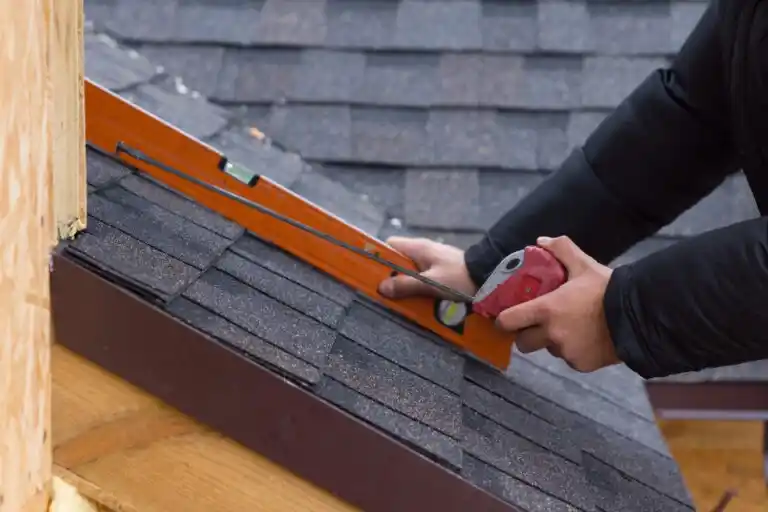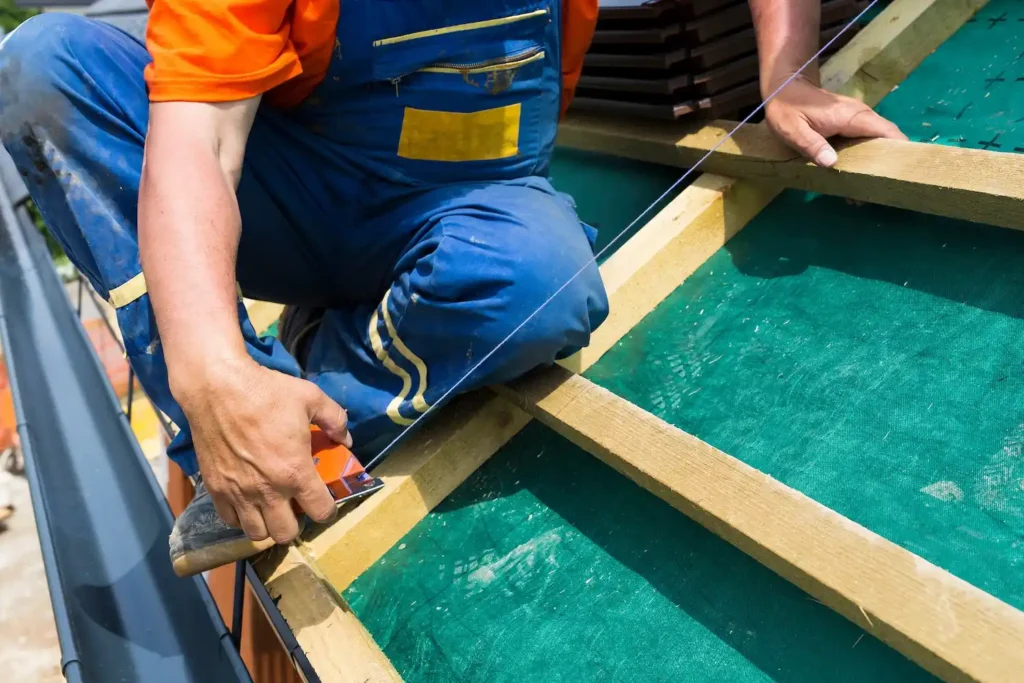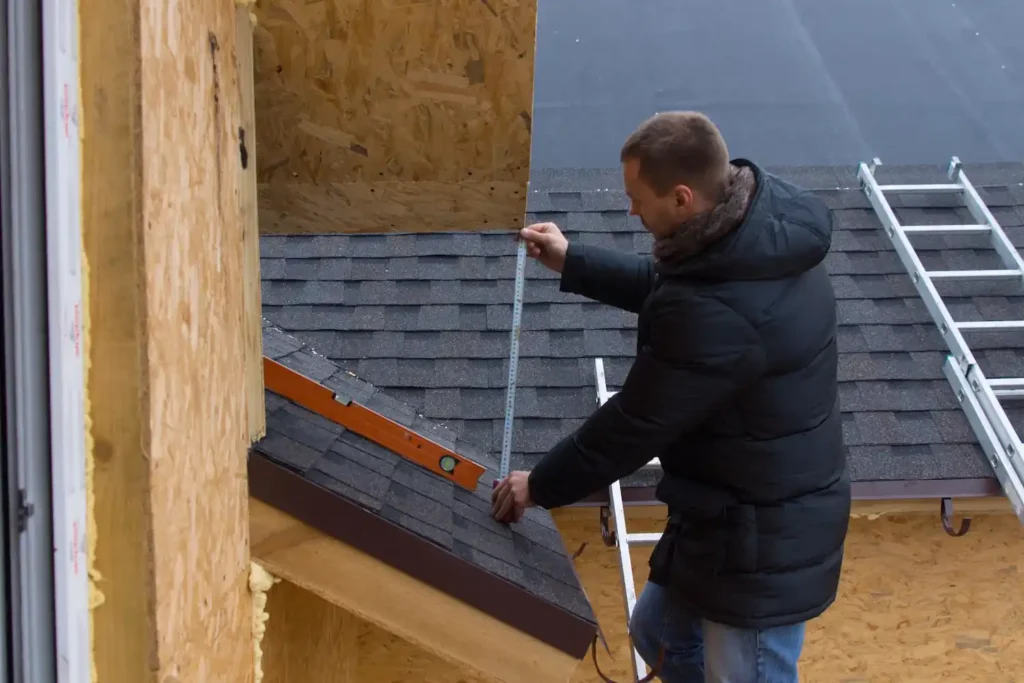What are the basic steps of measuring a roof? How can you find out the necessary materials for your own DIY project?
Homeowners can usually get a rough estimate of their house’s roofing squares using a tape measure. This helps owners accurately measure the materials required for roofing projects.
HOW TO MEASURE A ROOF WITHOUT A ROOFING CONTRACTOR
Estimating your roof is key for most homeowners to see the size of repairs needed, shingle information, and DIY projects. Receiving accurate roof measurements is key for any upcoming roofing project.
MEASURE THE ROOF FROM THE GROUND FIRST
The first step of how to measure your info is to take measurements from the ground first using a measuring tape. Measure the length of the walls of your home or commercial building, including the overhang on either side to calculate the total roof area.
MEASURE THE ROOF PITCH
The second step of how to measure your roof is to calculate the pitch of your roof, also known as the steepness or the slope of your roof.
The pitch of your roof is measured out of 12 inches. For example, some roof pitches are considered 7 in 12.
When telling a roofing contractor about the pitch of roofs, you can use the words “roof rise”, “roof’s pitch”, and “roof slope” interchangeably.
ESTIMATE THE SQUARE FOOTAGE USING THE PITCH
The third step is to use a pitch multiplier to see the roof’s square footage. The pitch can help determine the entire roof area.
Homeowners need to multiply the length by the width of the pitch multiplier to get the square footage.
For example, if your home’s roof is 46 feet x 25 feet, then the total footage of your roof would be 1,150 square feet.
Taking this number into account, use the pitch to see the overall square footage. If the pitch is 7 in 12, the total roofing estimate is 1.158 x 1,150, which is 1,331.7 square feet.
FIGURE OUT THE MATERIAL NEEDS
The next step of estimating a roof area is to figure out how many roofing materials you need for your repair replacement.
This step requires dividing the estimated square footage by 100 to figure out how many squares you need for your new roof.
For example, you can take 1,331.7 / 100 to get 13.317, meaning you need at least 14 squares to complete the DIY project.
Knowing the surface area of one square can help you find out the total footage of your roof for adding new shingles.
DIAGRAM THE ROOF
Next, you need to diagram the roof by getting access to it. Access the roof and then measure each side of the structure.
If you are measuring the flat area of your flat roof, take note of the length and width. If you are measuring a sloped section, measure the individual areas.
TAKE ACCURATE ROOF MEASUREMENTS
The next step is to measure any additional structures on your roof, such as the ridge, valley, edge, or dormers.
DRAW A DIAGRAM
After you have measured the length and width of your roof, diagram the roof and label the roof’s measurements to keep track of your calculations.
DIVIDE THE ROOF
After drawing your diagram on a piece of paper with the measurements, divide the roof into smaller areas.
Separating your roof into geometrical sections can help you simplify the calculations during the last stages of the measurement process.
FIND THE AREA OF THE RECTANGLES
After dividing the roof into simpler sections, you need to find the area of the rectangle by multiplying the length and the width.
Determine the square footage of each rectangular section and record it on your diagram.
FIND THE AREA OF THE TRIANGLES
The next step of finding the measurements of your roof is to determine the area of the triangles. This requires you to use the formula a = ½ (b) x (h), where b = base and h = height.
ADD UP THE AREA CALCULATIONS
Next, add up the entire area calculation of both the squares and triangles on your roof. The total sum of the squares and triangles on your roof is the overall square footage.
This total number will help you understand the materials required for your project.
DIVIDE SQUARE FOOTAGE BY 100 TO GET THE ROOFING MATERIALS REQUIREMENTS
The last step of seeing how much material you need for your roof is to divide the total square footage by 100 to get the total number of squares for your project.
FINAL THOUGHTS
There are a few things to keep in mind when it comes to calculating the precise measurements of your roof.
Owners need to make sure the materials they purchase will span the entire house, including the ridge vents, drip edge, and other edge.
Learning how to measure your roof is essential to calculating your home’s square footage and providing a local roofing contractor with the necessary information to install a new metal roof.
Although a professional will do the project, calculating your roof ahead of time can give you an idea of how many roofing materials you need to pay for to cover the roof’s square footage.
Choosing the right number of asphalt shingles for your roof pitch and total square feet can help you account for the total area of your home.
So, what are the key takeaways when it comes to roofing?
Firstly, you need to know how to calculate the slope of roofs and the roof pitch when it comes to installing a new roof.
Secondly, Google Earth and satellite imagery can help you measure your roof.
Thirdly, you should start measuring the square footage of your roof from the ground.
Fourthly, taking measurements can help you save money while installing a new roof, since you will only purchase the shingles you need and none will go to waste.
Lastly, learning how to calculate your roofing needs can help you find a qualified professional in the roofing industry.
Overall, every shingle counts when it comes to accurately estimating your house’s square footage!





